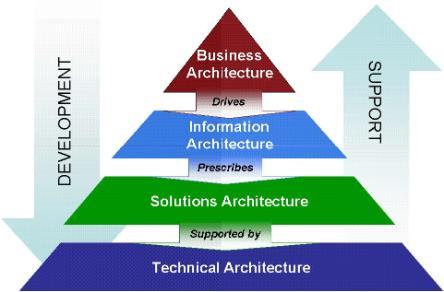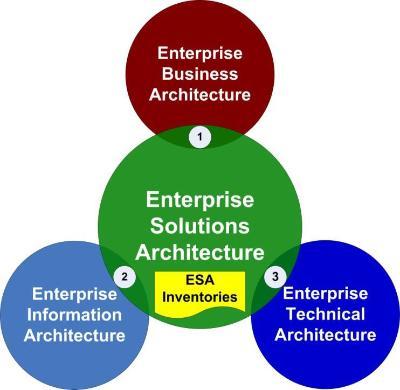Introduction
Authority
- Code of Virginia, §2.2-2007. (Powers of the CIO)
- Code of Virginia § 2.2-2007.1. Additional duties of the CIO relating to information technology planning and budgeting
- Code of Virginia, §2.2-2009(A). Additional duties of the CIO relating to security of government information
- Code of Virginia, §2.2-2012(A). Additional powers and duties related to the procurement of information technology
Scope
This standard is applicable to all Executive Branch state agencies and institutions of higher education (hereinafter collectively referred to as "agencies") that are responsible for the management, development, purchase and use of information technology resources in the Commonwealth of Virginia. This standard does not apply to research projects, research initiatives or instructional programs at public institutions of higher education.
Review Process
These requirements were posted on VITA’s Online Review and Comment application (ORCA). All agencies, stakeholders and the public were encouraged to provide their comments through ORCA. All comments were evaluated, and individual commenters were notified of action(s) taken.
Requirements & Exceptions
The requirements included here are mandatory. Agencies and suppliers deviating from these requirements must request an exception for each desired deviation, and receive an approved Enterprise Architecture Exception via Archer, prior to developing, procuring or deploying such technology, or not complying with a requirement specified in this document.
Purpose
This standard establishes direction and technical requirements which govern the acquisition, use and management of information technology resources by executive branch agencies.
Background
The Commonwealth’s Enterprise Architecture is a strategic asset used to manage and align the Commonwealth’s business processes and Information Technology (IT) infrastructure/solutions with the State’s overall strategy.
The Enterprise Architecture is also a comprehensive framework and repository which defines:
- the models that specify the current (“as-is”) and target (“to-be”) architecture environments;
- the information necessary to perform the Commonwealth’s mission;
- the technologies necessary to perform that mission; and
- the processes necessary for implementing new technologies in response to the Commonwealth’s changing business needs.
The Enterprise Architecture contains four components as shown in the model in Figure 1.

Figure 1 - Commonwealth of Virginia Enterprise Architecture Model
The Business Architecture drives the Information Architecture which prescribes the Solutions Architecture that is supported by the Technical (technology) Architecture.
Standard Inputs
The requirements and technology component standard tables contained in this standard have been consolidated from inputs from EA workgroups, Customer Account Managers (CAMs), Agency Information Technology Resources (AITRs), the Architecture & Innovation Governance Forum (AIGF) and the Platform Service Delivery Forum (PSDF) when researching, providing recommendations and developing the Commonwealth’s Enterprise Architecture.
Definition of Key Terms
This standard presents two forms of architecture direction for agencies when planning or making changes or additions to their information technology:
- Requirement Statements – this standard’s requirement statements present mandatory Enterprise Architecture direction for agencies when planning or making changes or additions to their information technology.
Glossary
As appropriate, terms and definitions used in this document can be found in the COV ITRM IT Glossary.
Agency Exception Requests
The requirements included within this document are mandatory. Agencies that want to deviate from the requirements and/or technology standards specified in this standard may request an exception using the Enterprise Architecture Change/Exception Request Form. All exceptions must be approved prior to the agency pursuing procurements, deployments or development activities related to technologies that are not compliant with this standard.
Agencies requiring deviation from the enterprise architecture (EA) EA225 requirements and/or technology standards, may request an exception using VITA's Archer application.
Enterprise Business Architecture - EBA
The EBA documents the business strategy, governance, organization and business functions of Virginia state government, and identifies which organizations perform those functions. The EBA provides a look at the big picture of state government from a business perspective to define who we are, what we do and where we want to go.
The Enterprise Business Model (EBM) of the EBA was developed to define the “what we do” in terms of business functions independent of the organizations that perform those functions. That model was developed from the Federal Enterprise Architecture’s Business Reference Model and was validated through workshops of agency business leaders. These workshops mapped individual agency business functions to the EBM, thus creating the Commonwealth’s "as-is" business architecture for Executive Branch agencies.
For additional information, readers can use the EBA application or consult published EBA reports which can be found on the COV EA website at:
Enterprise Information Architecture - EIA
Government and government services are normally information driven. Government organizations constantly and dynamically gather and process data to create information needed to support their missions, whether it is disaster recovery, environmental protection, citizen security or other direct services. The Enterprise Information Architecture (EIA) provides the framework/model and methodology that will enhance each agency’s ability to quickly discover, access and understand data and create the information needed to make critical decisions and support agency business functions.
The EIA is designed to provide a common framework for the cost effective sharing of government information across organizational lines while respecting the security, privacy and appropriate use of that information. It must enable agency leaders to manage information as a Commonwealth asset to better serve the citizens of Virginia. It increases the Commonwealth’s agility in drawing out the value of information as a strategic mission asset.
EIA Requirements
Enterprise Solutions Architecture - ESA
The expectations of government to deliver more services, to deliver them better and more cheaply presents a challenge for the Commonwealth. Well-engineered automated solutions1 can increase productivity in service delivery to help meet these expectations.
Commonwealth agencies make significant investments in these automated solutions in order to carry out the business of Virginia government.2 The Commonwealth Enterprise Solutions Architecture (ESA) provides the framework/model and methodology that supports the transition from silo-based, application-centric and agency-centric information technology investments to an enterprise approach where solutions are designed to be flexible. This allows agencies to take advantage of shared and reusable components, facilitates the sharing and reuse of data where appropriate and makes the best use of the technology infrastructure that is available.
The ESA needs to contain a unified view of solutions to achieve this increase in reuse and the reduction of solution complexity. To support this, the framework/model and methodology includes: inventories, governance/guidance and the relationships between agency applications and the other EA component architectures.

Figure 2 - Commonwealth of Virginia ESA: Unified View of Solutions
The unified view of solutions includes the Business (EBA), Information (EIA) and Technology (ETA) perspectives. This view also shows how agency solutions/applications connect to:
- The business of the Commonwealth - by sub-lines of business
- Data Exchanges
- Infrastructure Services - by Software Tools (Operating Systems, Languages, etc.)
ESA Requirements
- Application Domain Report
- Cloud Based Hosting Topic Report (Word version)
- Enterprise Systems Management
- EA Solution Computer-based Signature Standard (Word version)
- EA Solution Data Availability Requirements (Word version)
- EA Solutions Web Systems Standard (Word version)
- Integration Domain Report
- Legacy Information Technology
- Smart Device Use
- SOA Integration Domain Topic Report
- Social Media Topic Report v2.0 - June 2019
Enterprise Technical Architecture - ETA
The ETA guides the development and support of an organization’s information systems and technology infrastructure.
ETA Requirements